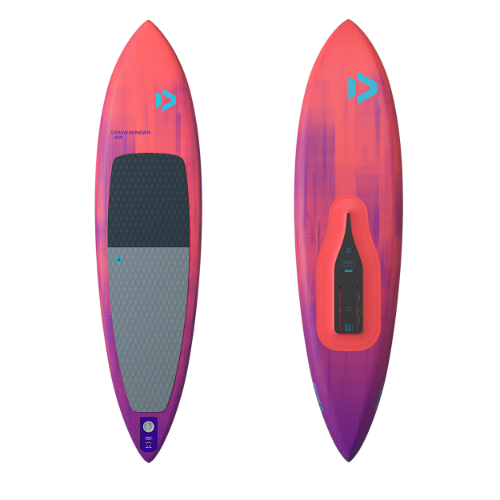Downwinder SLS
SUP DOWNWIND / WING LIGHTWIND
Downwinder Slim SLS
SUP DOWNWIND PERFORMANCE
Downwinder Air
SUP DOWNWIND / WING LIGHTWIND
DOWNWIND FOILING FAQ
Generally, beginners often struggle with stability since boards that allow efficient paddling onto the foil should be longer and slimmer. The rule is: length is your friend. The longer and slimmer the board, the easier it is to paddle to speed, which is crucial with somewhat faster waves and swell. On boards that are too narrow, however, it becomes difficult to maintain balance.
Slightly more compact boards have their advantages in maneuverability but often face disadvantages during the paddle-up. The shorter and steeper the wave, the more compact the board can be; the faster and rounder the wave, the more advantageous are boards of 8 feet and longer, with widths under 19 inches.
The optimal dimensions of the downwind board depend on the conditions and intended use. If the board is only used for SUP downwinders, long and narrow boards are generally easier, as they can be paddled up to speed more quickly. If the board is also used for Wing Foiling, slightly more compact downwind boards are recommended, as too much board length can be disturbing in Wing Foiling.
As a general rule: the rounder and faster the wave (swell on open water), the longer and narrower the board should be; the shorter and steeper the wave, the better a slightly shorter and wider downwind board can be paddled onto the foil, providing advantages in maneuverability. However, it can generally be stated that longer and narrower boards are easier to paddle onto the foil.
For more answers on this and other topics, you can find them here in our Help Center.
:grayscale(false):quality(10):blur(20))
:grayscale(false):quality(10):blur(20))
:grayscale(false):quality(10):blur(20))


